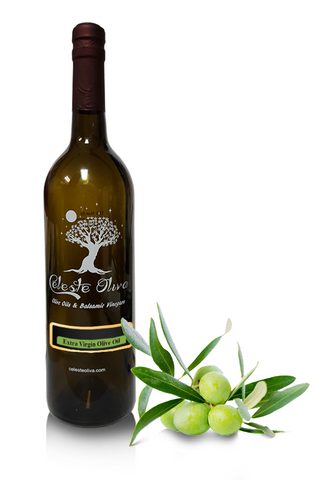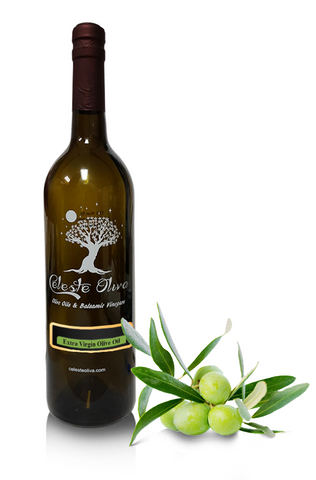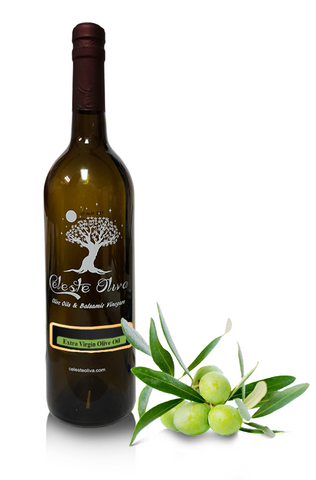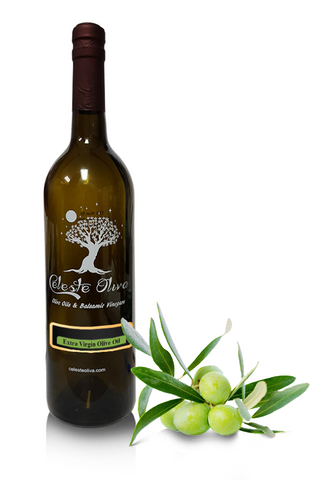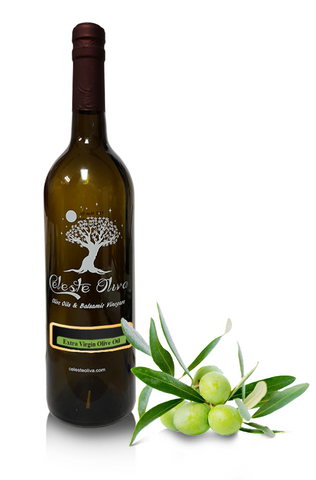Extra Virgin Olive Oil
Our Ultra Premium Extra Virgin Olive Oils come from around the world. The olives are picked "Early" when they are still green. This causes our Extra Virgin Olive Oils to contain a lot of polyphenols. Our Ultra Premium Extra Virgin Olives are pressed two to four hours after they are picked. Once the oils are pressed samples are sent to a lab in Australia and they are tested. We tell you exactly what's in the oil, when it was crushed, and where it was crushed.
IT IS VERY IMPORTANT TO KNOW THE CHEMISTRY OF EXTRA VIRGIN OLIVE OILS!
What the Chemistry terms mean in our Ultra Premium Extra Virgin Olive Oils is this:
1. Biophenols (polyphenols): are the antioxidants that naturally occur and are measured in extra virgin olive oils. The higher the polyphenols, the more bitter and pungent the olive oil will be. Polyphenols extend the life of the olive oil. Oleocanthal: is a phenylethanoid or natural phenol. It is responsible for what creates a burning sensation at the back of the throat. If you do not feel this sensation when you're tasting an olive oil, that's a sign it may not be a healthy olive oil.
2. FFA (Free Fatty Acid): The lower this is, the better. This indicates the condition of the olives at the time of the crush. Healthy olives should produce low FFA. The IOC requires that this number be below .8. Our Extra Virgin Olive Oils average is around .18. Another tidbit is, the lower the FFA the higher the smoke point is in the olive oil.
3. Oleic Acid (this is the good fat!)(Monounsaturated Fat): The Fatty Acid Profile must be comprised of at least 55 % Oleic Acid in order for it to be called an extra virgin olive oil. The average of our extra virgins is around 77%. This fat is what helps to improve cholesterol balance. The Oleic Acid also helps prevent the olive oil from spoiling.
4. Peroxide: This must be equal to or less than 20. The average of our oils at the time of crush is around 3.2. This is a main measurement of rancidity of a particular extra virgin olive oil. The peroxide is affected by the process used in crushing olives and in storing olive oil. Why it's so important to not let your olive oils get near light or heat when you are storing them!
5. DAGs(Diacylglycerols): Good fresh extra virgin olive oil should have 85 % or higher. The DAGs in fermented or rotten olives will be low and have a short shelf-life. Our olive oils are well over 90% all the time.
6. PPP (Pyropheogphytin A): is Chlorophyll degradation products in olive oil. Freshly made oil should have a PPP of close to zero.
7. Squalene: is an isoprenoid compound structurally similar to beta-carotene. It is transported in serum generally in association with LDL and is distributed in human tissues, with the greatest concentration in the skin. It is one of the major components of the skin surface lipids.
Olive oil is considered one of the richest renewable sources of squalene.
8. A-Tocopherols: is a form of Vitamin E that is preferentially absorbed and accumulated in humans. Recommended daily amount (RDA) for adults of Vitamin E is 10 mg/day. In EVOO, The main Tocopherol is alpha(-90% of the total) with very little amount of beta, gamma and delta.


